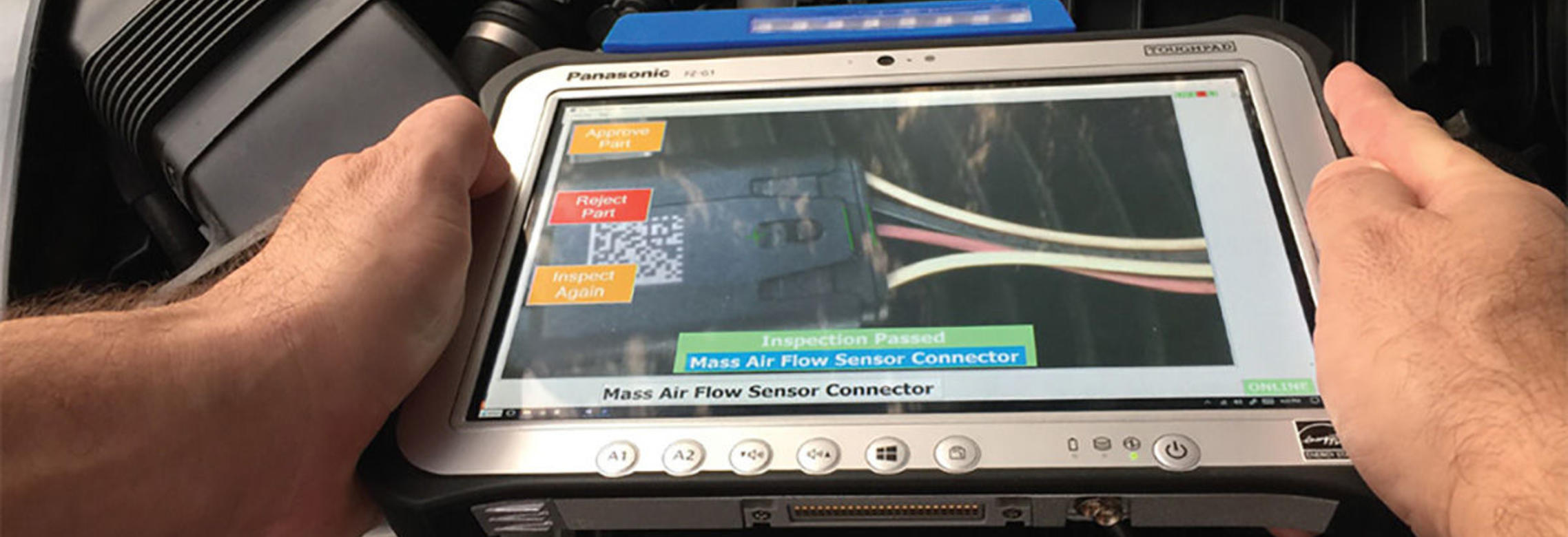Ford Sync 3

To global automakers there may be no more important recognition than the J.D. Power Initial Quality Study. The study looks at problems vehicle owners encounter in the first 90 days of ownership to determine a quality ranking. In J.D. Power’s 2017 report, the Ford brand shot up in the quality rankings. It achieved its highest quality ranking since the study was launched, placing fourth overall and second among non-luxury brands. “The Ford SYNC® 3 Infotainment System is a primary contributor to Ford Motor Company’s strong performance,” according to J.D. Power.
Ford has been improving the capability and quality of integrating new technologies into its vehicles, including SYNC 3 equipped on 70 percent of vehicles. According to the automaker, Ford is delivering new innovations with better quality than average as the industry has faced challenges rolling out new advancements such as connectivity and driver-assist features.
Challenges
As Ford Motor Company developed its next generation SYNC 3, it wanted to wow drivers with in-vehicle technologies that were not only innovative but also reliable and easy to use. Ford was attracted to Panasonic for our consumer electronics experience and historic success creating infotainment systems that rank high with consumers. The SYNC 3 was on a fast track to market and needed our consumer-centric approach to solution development in order to hit its challenging 18-month timeline.
Solutions
Panasonic led SYNC 3’s software and hardware design, development and implementation for a fast, easy-to-use system with enhanced response to driver commands. Ford set up the project almost like an internal initiative with Panasonic software developers and engineers collaborating with their counterparts at the OEM. That meant if changes had to happen, they could happen fast. We exposed SYNC 3 to Ford's development fleets and to non-engineers to test out the infotainment system before the technology went into market.
Results
Panasonic met the tight 18-month deadline, delivering a high quality and robust design, for a system that intuitively responds to consumers while disappearing behind the experience. In 2017, the Ford brand achieved its highest ranking ever by the J.D. Power Initial Quality Study, placing fourth overall and second among non-luxury makers. Today SYNC 3 scores so well, it’s considered a competitive advantage for Ford. “The Ford SYNC® 3 Infotainment System is a primary contributor to Ford Motor Company’s strong performance,” according to J.D. Power.
Innovations that work
Vehicles are far more complex than smart phones, but few consumers want to think about a car's complexity. Car buyers want "wow" technology. They want to jump in their car and have their infotainment system work as easily and quickly as their handheld. What we've learned after almost a century of consumer technology development at Panasonic, is that the "wow" wears off quickly if the machine doesn't work. Companies that successfully introduce innovations design them so consumers intuitively understand their features. With intuitive use comes delight, trust, and ultimately, from a consumer's perspective, technology that disappears behind the experience it supports.
Voice recognition that hears over Bruno Mars
One interesting example is voice recognition technology. Some of the earliest voice recognition work dates to the 1950s. Back then, Bell Labs announced a machine that could understand a voice’s simple sounds, kind of like baby talk. Today consumers want vehicles with voice recognition technology that understands what they’re saying at the same time horns are blaring, passengers are talking, while Bruno Mars croons in the background. They hate it when the voice recognition system gets it wrong.
The good news is that cloud computing can provide more data processing power than ever, which enables speech recognition tech to more easily handle evolving grammar rules, word choices and an individual’s speech amidst background cacophony. As a result, consumers can use “wow” speech recognition tech without worrying about how to make it work. In fact, during a test with consumers, SYNC 3 was able to decipher what users were saying despite having their mouths full of food.
Consumer-centric approach
Panasonic took on the SYNC 3 project in 2013. With our consumer electronics experience and more than 60 years’ experience as a Tier 1 auto supplier, Panasonic had already established itself as a leading global supplier for in-vehicle technology for brands such as General Motors, Fiat Chrysler Automobiles, Toyota and Daimler and others.
Ford SYNC 3 is a prime example of the consumer-centric approach Panasonic takes when developing solutions. Its role was to lead SYNC 3’s software and hardware design, development and implementation for a fast, easy-to-use system with enhanced response to driver commands.
Fast track to market
Panasonic is one of only a few auto suppliers that offers full end-to-end software and hardware development capabilities to automakers. When we became involved SYNC 3, we knew it would have unique challenges and be on a fast track to market. Ford leaders made decisions early that would ensure we hit the challenging 18-month timeline. Fundamentally, Ford recognized Panasonic’s historic success creating infotainment systems that rank high with consumers, and shared the idea that technology – even wow technology – should fade into the background behind the experience it supports. Ford set up the project almost like an internal initiative with Panasonic software developers and engineers collaborating with their counterparts at the OEM. That meant if changes had to happen, they could happen fast.
Moving rapidly with quality can be done on large collaboration programs such as SYNC 3, but a supplier can’t do it alone. Ford did a fantastic job exposing SYNC 3 to its development fleets before the technology went into market. We did it too – giving out cars to non-engineers to test out the infotainment system and let us know how things worked. The result was high quality and robust design.
Today SYNC 3 scores so well, it’s considered a competitive advantage for Ford.



